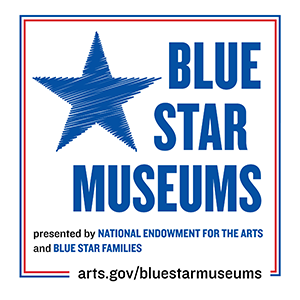Ernest Hüpeden, The Painted Forest, Valton, WI
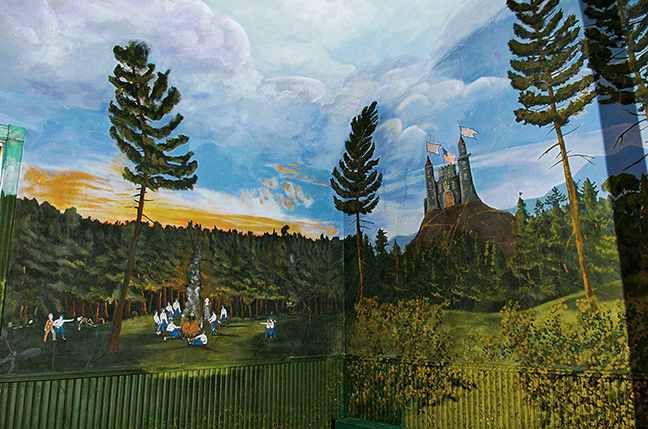
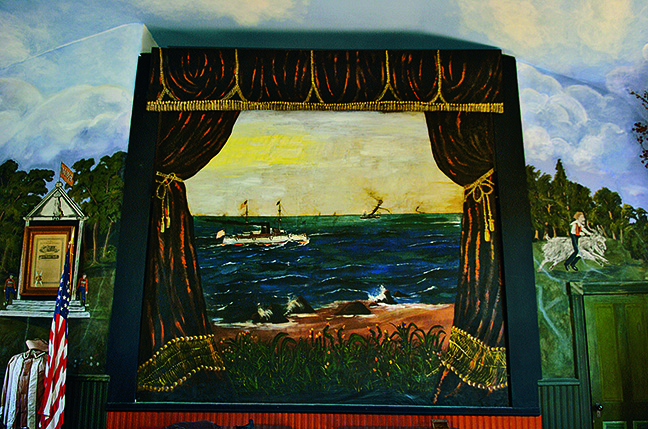
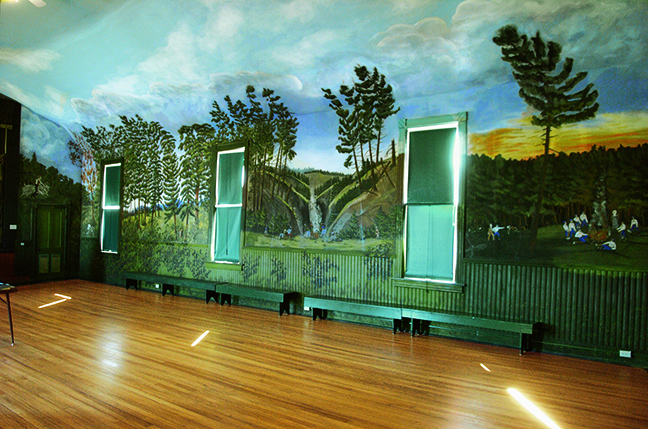

The Site
After a life of wandering and painting, Ernest Hüpeden settled in Valton, Wisconsin, in 1898, where he was quickly commissioned to paint the interior of a Modern Woodmen of America lodge. The panoramic mural is rife with symbolic references to the Woodmen, including the fraternal order’s initiation ceremony. The final scene of the narrative depicts an imagined Valton of 1999; it survives as an account of how people envisioned the future at the turn of the twentieth century. The MWA lodge remained a public building until the 1960s, when it was purchased by Delores and Ron Nash, saving it from destruction. They titled the mural “The Painted Forest” for its inclusion of the piney hills and valleys that encircle Valton.
Today, “The Painted Forest” is stewarded by Edgewood College and is open for visitors.
The Arts Center’s collection of Hüpeden’s work is made up of eight paintings and a cabinet with six painted panels.
Ernest Hüpeden
1855–1911
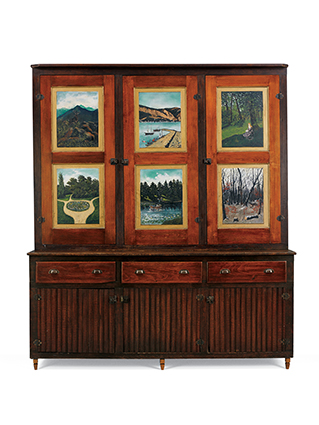
As is the case for histories with scant documentation, the facts of Ernest Hüpeden’s early life are uncertain. According to best available information, Hüpeden was born in Germany in 1855 and immigrated to New York City in 1878. In his native country, he apparently worked as a banker and was imprisoned for a period of time for a crime he maintained he didn’t commit. He made his way to the upper Midwest on foot, supporting his journey by painting. Hüpeden eventually settled in Valton, Wisconsin, in 1898 and became known for his murals and paintings on furniture and household items such as bottles and pie pans. His tour de force is a large mural covering the walls and ceiling of a Modern Woodmen of America (MWA) lodge, created between 1898 and 1899. The artist died a decade later, in 1911.
In the 1980s, Kohler Foundation, Inc., acquired the lodge and began restoration of the building and murals. After preservation it was given to Sauk County and the Historical Society of the Upper Baraboo Valley. In 2001 the foundation regained stewardship of “The Painted Forest” and built an additional art studio and study center, gifting the site to Edgewood College in Madison, Wisconsin, in 2004. Between that year and 2017, Kohler Foundation also gifted eight Hüpeden paintings and a large cabinet with six panels painted by Hüpeden to the John Michael Kohler Arts Center.
Arts Center Exhibitions
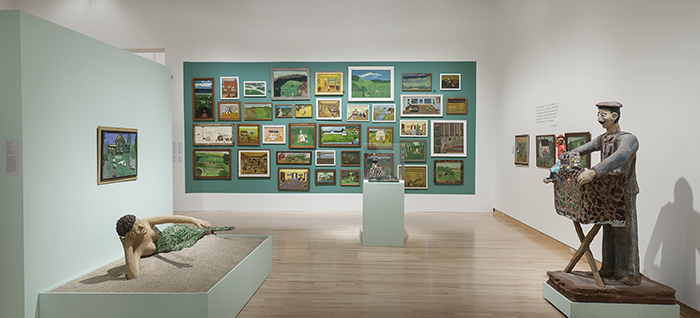
Driftless: Nick Engelbert & Ernest Hüpeden +David Rhodes
January 15–April 16, 2017



